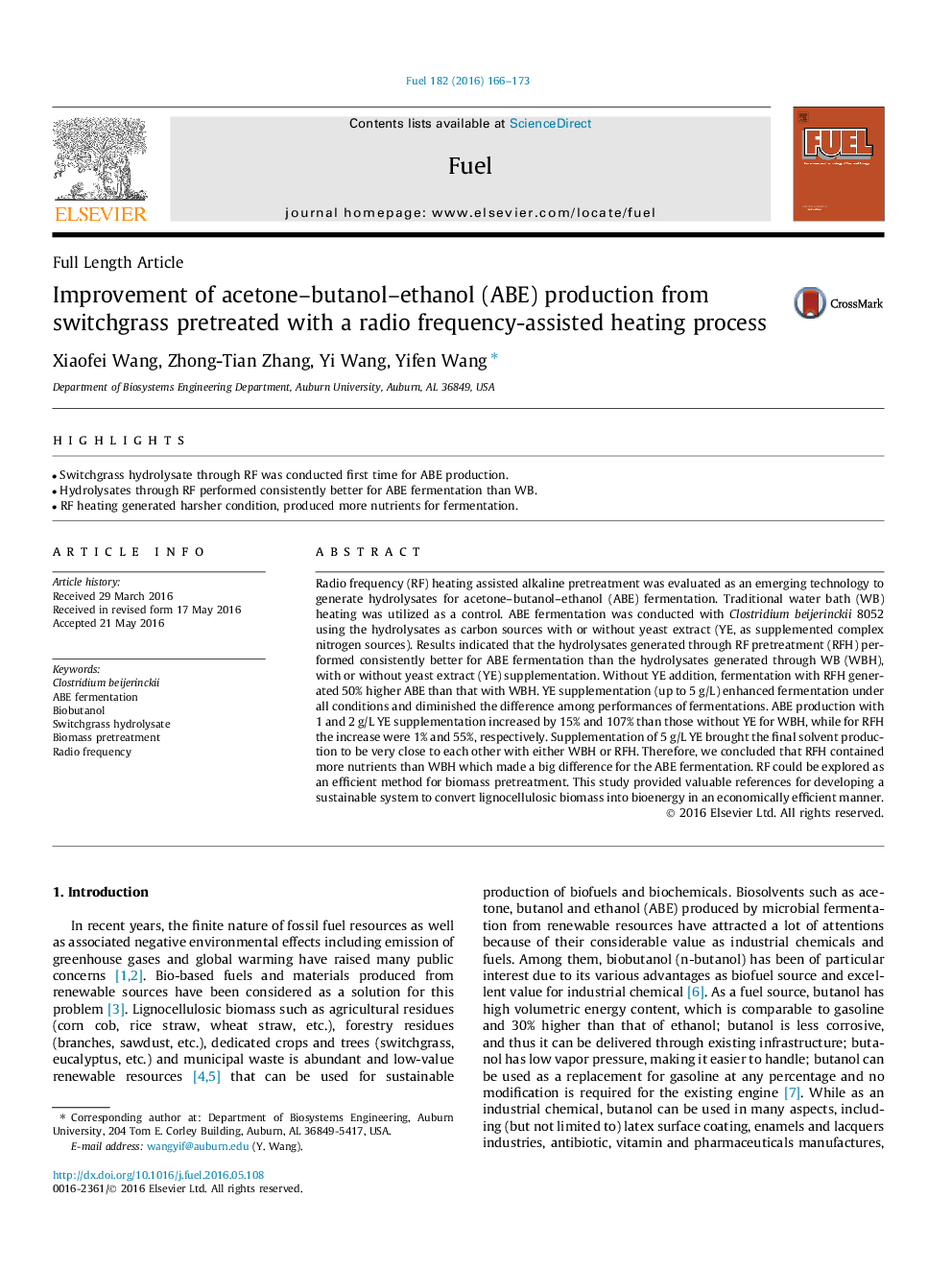| Article ID | Journal | Published Year | Pages | File Type |
|---|---|---|---|---|
| 6633408 | Fuel | 2016 | 8 Pages |
Abstract
Radio frequency (RF) heating assisted alkaline pretreatment was evaluated as an emerging technology to generate hydrolysates for acetone-butanol-ethanol (ABE) fermentation. Traditional water bath (WB) heating was utilized as a control. ABE fermentation was conducted with Clostridium beijerinckii 8052 using the hydrolysates as carbon sources with or without yeast extract (YE, as supplemented complex nitrogen sources). Results indicated that the hydrolysates generated through RF pretreatment (RFH) performed consistently better for ABE fermentation than the hydrolysates generated through WB (WBH), with or without yeast extract (YE) supplementation. Without YE addition, fermentation with RFH generated 50% higher ABE than that with WBH. YE supplementation (up to 5Â g/L) enhanced fermentation under all conditions and diminished the difference among performances of fermentations. ABE production with 1 and 2Â g/L YE supplementation increased by 15% and 107% than those without YE for WBH, while for RFH the increase were 1% and 55%, respectively. Supplementation of 5Â g/L YE brought the final solvent production to be very close to each other with either WBH or RFH. Therefore, we concluded that RFH contained more nutrients than WBH which made a big difference for the ABE fermentation. RF could be explored as an efficient method for biomass pretreatment. This study provided valuable references for developing a sustainable system to convert lignocellulosic biomass into bioenergy in an economically efficient manner.
Related Topics
Physical Sciences and Engineering
Chemical Engineering
Chemical Engineering (General)
Authors
Xiaofei Wang, Zhong-Tian Zhang, Yi Wang, Yifen Wang,
